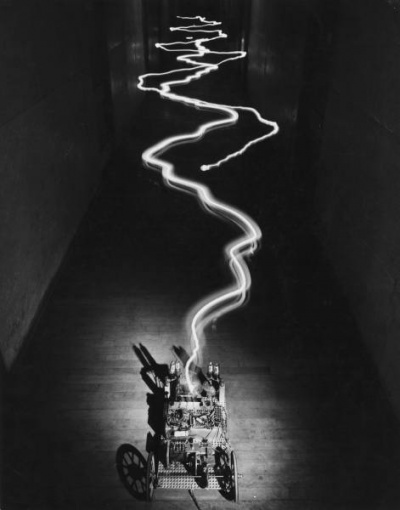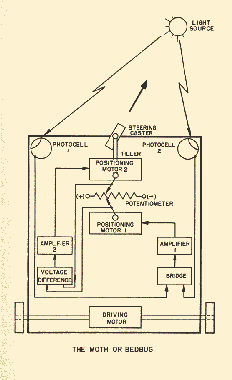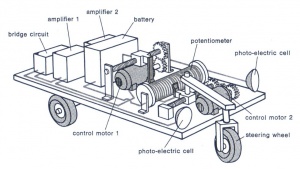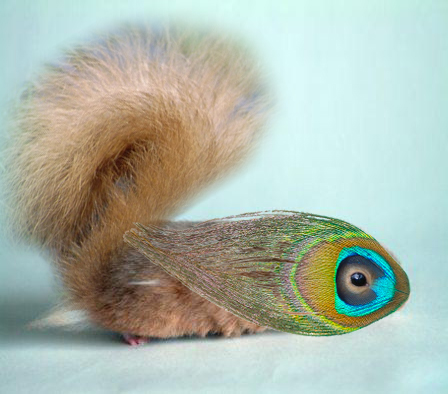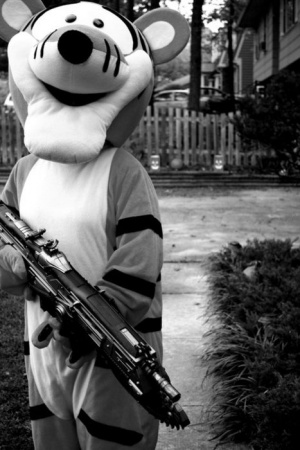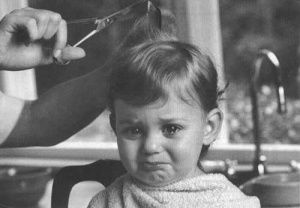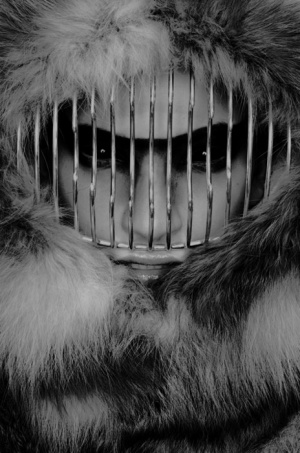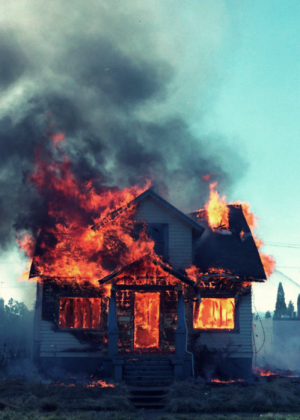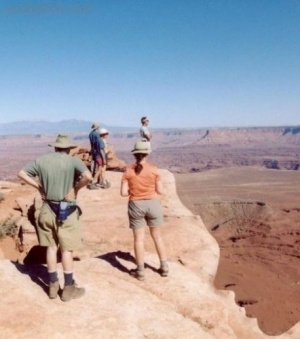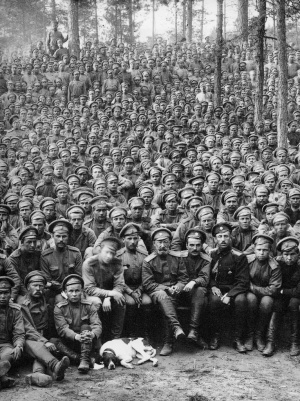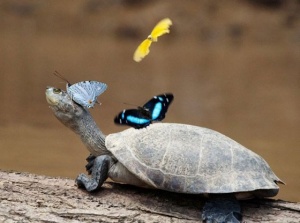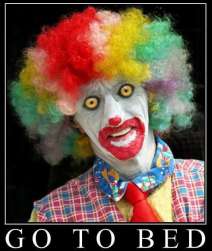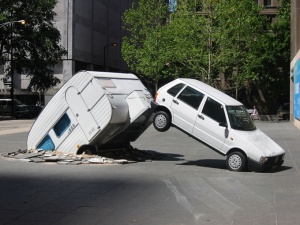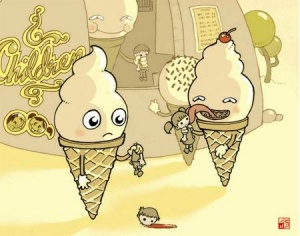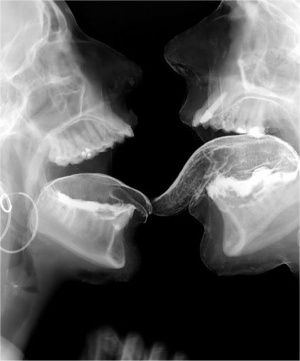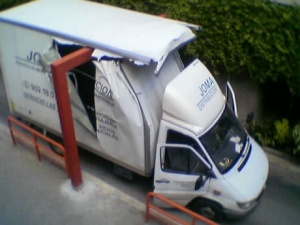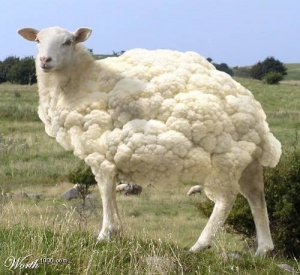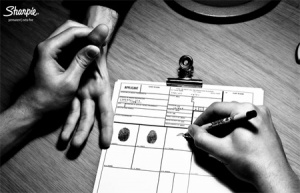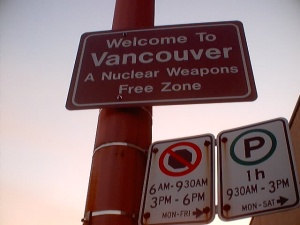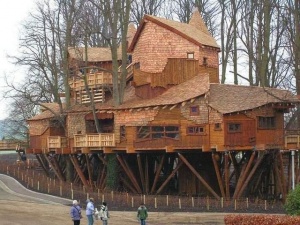User:Mirjam Dissel/collected notes: Difference between revisions
| Line 357: | Line 357: | ||
==13th of March 2012 - NEW IDEA project + thesis outline == | ==13th of March 2012 - NEW IDEA project + thesis outline == | ||
I've tried putting two random images together and get a description out of that that would fit both of the images. This has proven to be quite difficult. In order to force associative thinking I've made a quartet game (see wikipedia: [http://nl.wikipedia.org/wiki/Kwartet_(kaartspel)] or [http://en.wikipedia.org/wiki/Go_Fish]), two different variants. In one game I've already assigned all the random images to form sets of 4 and colour coded them. While playing the game you can ask the opponent for images that complete one of your sets; but following the original rules, you can only ask for images related to the set you own. This means you have to describe your own set, or one of the images from your hand. In a normal game you could ask: "of the vehicles, do you have the car?", in this game you could ask: "do you have something aggressive?". You may inquire for this card on the basis of your aggressive yellow set, but get a green card in return. Also, a card with a creepy looking clown could be interpreted both as 'funny' and 'scary'. The discussion that takes place while playing was the most interesting part of the game. Also the combinations made really depend on how the game is played, the order the cards are taken from the stack, the way they are traded and how in the end, when you only have a couple of cards left you need to think about your descriptions differently in order not to keep exchanging the same cards. Also, sometimes you can't ask the same card back because you have not found the description yet that describes the whole set. i.e. When someone steals your 'car' card, you can ask it back in the next turn because you might still have your 'bike' card, both belonging to the 'vehicles' set. | I've tried putting two random images together and get a description out of that that would fit both of the images. This has proven to be quite difficult. In order to force associative thinking I've made a quartet game (see wikipedia: [http://nl.wikipedia.org/wiki/Kwartet_(kaartspel)] or [http://en.wikipedia.org/wiki/Go_Fish]), two different variants. In one game I've already assigned all the random images to form sets of 4 and colour coded them. While playing the game you can ask the opponent for images that complete one of your sets; but following the original rules, you can only ask for images related to the set you own. This means you have to describe your own set, or one of the images from your hand. In a normal game you could ask: "of the vehicles, do you have the car?", in this game you could ask: "do you have something aggressive?". You may inquire for this card on the basis of your aggressive yellow set, but get a green card in return. Also, a card with a creepy looking clown could be interpreted both as 'funny' and 'scary'. The discussion that takes place while playing was the most interesting part of the game. Also the combinations made really depend on how the game is played, the order the cards are taken from the stack, the way they are traded and how in the end, when you only have a couple of cards left you need to think about your descriptions differently in order not to keep exchanging the same cards. Also, sometimes you can't ask the same card back because you have not found the description yet that describes the whole set. i.e. When someone steals your 'car' card, you can ask it back in the next turn because you might still have your 'bike' card, both belonging to the 'vehicles' set. However, when someone steals your 'clown' card, how will you ask it back with only 'galaxy', 'truck', and 'grand canyon' cards in your hand? This again creates discussion and tries to open up the subconscious more, letting go of preconceptions and freely associating within self-set boundaries. | ||
The other game does not have predetermined sets. The goal here is to make sets as you go. This game is much longer and much more difficult. It had some stricter rules of when you can change the topic of a set (after asking a card you set the topic, the topic can only be changed by the opponent when he asks for cards from another set, and receives matching cards from the previously set topic, which now is renamed to the new topic he just inquired about. | |||
Both games are about asking the right question, how to ask it, how to rephrase it to say a similar thing but to mean other things as well and because of that glue multiple images together. But the game has too many flaws, it's playable only as a prototype to find out what I want to achieve by putting these images together. A next step is to make the game endless, to have random images be inserted in the game every time, so the player can reconfigure his hand to his liking and perception and though is challenged enough, but not until boredom or frustration. | |||
At this point I had a hard time imagining an endless game, because the game still had other flaws. I thought about an online game or even an app. | |||
I made another mindmap to see what the subjects of my interest were and what the main focus was. | |||
Written this means: | |||
Revision as of 19:10, 16 March 2012
17th of October 2011
keywords portfolio
- mixing and matching
- collaboration
- provocation
- nostalgia
- reminiscence
- individual experience
- interpretations
- what happens inside your brain (manipulation?)
- reality vs.expectations/perception/lies
- generative & computational meets old fashioned fuzzy feeling
- contradictions
19 of October 2011, in class?
the forget book
dream analogy book
31st of October 2011, in class?
laurie anderson - dreampeace
salvador dali, what is his process of drawing to painting
rss sweater
translation and making things physically tangible. physicallity. dreams are so not that.
31st of October 2011, notes by Laura during presentation
Are you spending much time at dream analysis? Freud's book. Are you interested in the mechanism of dreams?
Interested in how do they're related to one another, also inside the dream.
Are you more interested in the content or the structure?
Not really, places are just place A and place B.
Do you think of working with images? Do you think of doing the reverse (such as from text -> to images)
Subjective patterns, and externalize them and make something completely different
interested in the mechanism of dreams, and how can that be translated into a machine
structure does have a certain pattern and interested in replicating it in some way
Life of Manuel Swedenborg, scientist 1800s, inventor- very rational life- at some point, his dreams started to influence his own behaviour, and his life became influenced by his dreams. He became a theologian, all of a sudden, claiming that god was talking to him, and angels, and stuff.
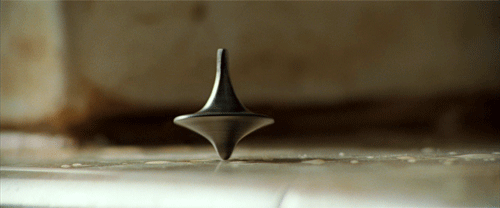
martin housen? version of the helmet of angels.
also William Blake - stuff
If there's a moment in which you claim there's some reality in what you dream - in that moment it becomes interesting to the rest of us / and psychoanalysis retroengineers the claim to reality (an encrypted version of a part of your life you don't wish to know about
Amy says: 'waking life' movie, protagonist in lucid dream
14th of November 2011, group?
visual analogies to processes. retelling. fact that something is fragmentary, through conspiracy or reliving a trauma and trying to make sense of it.
susan hiller - dream mapping 1974
tedtalks lifelogging
tilburg textile museum
16th of November 2011 - with Steve
File:Steve 11-16-2011.ogg to make tangible something that is not there, something impossible to grasp. memories, sound to image (when you make it it's gone), catch the unseen/unheard. you can do it to a certain level, but you can't do it completely.
Ada, The Enchantress of Numbers: Poetical Science
eBook by Betty Alexandra Toole, Ed.D.
emphasis in relation to dreams and draw!
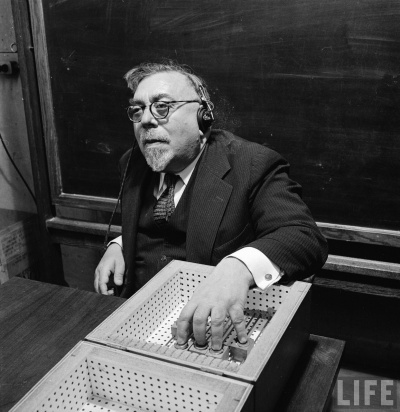
M.I.T professor Norbert Wiener testing a device capable of converting speech sounds into patterns
May 1949, Professor Wiener sitting like a boss, showing his project researching tremors/parkinson. The steering of the cart is decided by the photo cells on the front.
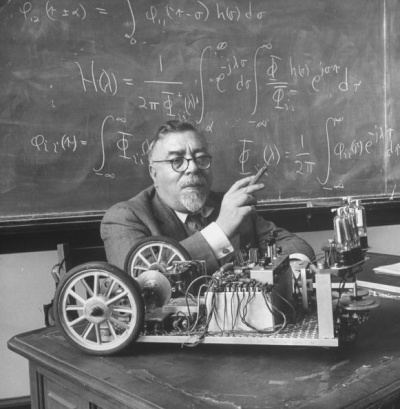
18th of November 2011, with Steve
23rd of November 2011
Went to see Lucid Dreaming in Stedelijk Museum Schiedam - Annotate! + add pictures and movieclips I made

29th of November 2011 - with Aymeric
File:Aymeric29thofnovember2011.ogg roland barthes - the third meaning http://thethirdmeaning.blogspot.com/2007/10/roland-barthes-third-meaning.html
daniel dennett - consciousness explained
part of the book explains how memory works - brain follows different models. orwellian model, etc.
hofstadter - i am a strange loop
mix of science, philosophy, what's the self, brain as a feedback machine, having input (very personal in comparison to dennett, which is scientific)
- navigation
- process of remembering
- objects in dreams. machine that make new machines.
storytelling, navigational system
turn into creative methodology, highlight 3 points, make it look like i'm in control
30th of November 2011 - with Steve in class
File:Steve 11-30-2011.ogg clarify this area of research. focus is really pulling in. research into those area's: memory is created as we remember. i'm inventing as i'm trying to remember, in this way my mind is a translation machine from dreams to memory, creating something physical. through practice i'm finding these things out. key thing!
- Look at Furtherfield, weaving blogs.
how internal things can be articulated/translated/decoded.
quinten for example does the opposite, he is interested how the external becomes internal. afterimage.
email janis about bibliography list about dreams.
to do:
- fix bibliography
- update proposal
7th of December 2011
- who is going to be at the graduation proposal assesment?:
simon, renee aymeric, barend, steve
what will happen?:
they will read proposals and talk about it (will it fly or not)
then they will invite us in. you can bring stuff in to show if you like.
they will tell us then if it needs more work or not.
some people have to resubmit, it's more like clarification.
the whole thing is more like 'how we understand your graduation proposal'
- Reading each others graduate proposals:
can you identify the research question
can you identify the project
why is is necessary
how is it going to be made
In other words:
what is the project
how are they gonna do it
... (something else)
Daan's feedback on proposal:
the 'what' is good.
how it's going to be realized is less clear, maybe it's about the fase we're in.
are the objects going to be in the gallery? no they are prototypes.
need some time before it becomes clear.
it's evident that i need more time to see where it leads.
why is this project necessary. in previous projects it becomes quite clear, bringing people together, memory. this seems more personal. don't know exactly how this relates to collective memory.
--
Inge's feedback on proposal:
three outcomes, pretty clear to inge.
as soon as you go to what have i been doing, it becomes a complete mishmash. be more editorial.
take out the workshop with inge.
take out bulletpoints? (save somewhere else?, sum it up in sentences?)
reads like a form and sketch
Tim Burton -> documentary about his works
Steve:
I can do more analog stuff in the studio and put it all around you.
My feedback on Inge's proposal:
I think the flow of the proposal is very good. Your descriptions, your writings, links one subject seemlessly to another. I admire how in the first part of your proposal you've managed to articulate something so.. well vague actually, and make this feeling you have so universal and easy for me to relate to and understand.
Only between 'I'd like to tell you something I've been thinking about.' and 'Selection of recent work' there seems to be a bit of a jump. Not so much, but it stands out because of the cohesiveness of the rest of the writings.
what you are actually going to do might be a bit more descriptive, a bit more articulated, for dummies so to say.
when reading it more thourougly I get what you want to do, but it's not immediately clear, I think it's also because at this stage you yourself don't have an exact idea of how the final project is going to look like. That's why you have a description of what you will do as a testing ground to further your thesis, so it falls into place. Although, after the very big introduction I'm still very curious about your next steps.
This really captures what you want to do:
"I want to create an experiential environment or
setting in which live performance and storytelling form bridges and gaps with online
interactions. A sound sample is followed by a movement elsewhere in the space, with
characters moving in between screens, perhaps set in motion by the audience moving
between them. A space where that little bit of me connects to that little bit of you. A
small, intimate, yet expansive space."
But it kind of gets swallowed inbetween the words, I would like to see it stand out more in some way. Maybe just by visually giving it more emphasis, or by giving the block "The coming months, I want to [...]" a separate header, to underline the fact that we're getting into the part where you're talking about what you actually want to start working on.
17th of January 2012
Explore the idea of being lost in translation. Maybe it's not about what is left after the translation, but what is missing, the ungraspable.
-
Is the machine dreaming? Desperately trying to tell us his (bad) dreams? (Driven by a different database everyday, or an updating dataset everyday, that is somehow related).
"Pachube ("patch-bay") connects people to devices, applications, and the Internet of Things. As a web-based service built to manage the world's real-time data, Pachube gives people the power to share, collaborate, and make use of information generated from the world around them."
https://pachube.com/
22nd of January 2012
It's about the short circuiting between dreams themselves, and about dreams and reality (conversations in dreams and things that happen in reality, when waking up).
-
http://apps.pachube.com/porthole/ (augmented reality showing graphs about feeds)
instead of a graph the 'machine' can show you what it's dreaming about depending on the feed's input (images? objects? drawings? meaningless lines on an xyz axis??)
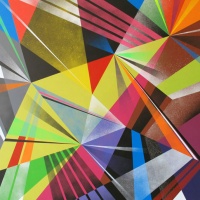
-
By playing with feeds parameters (light, temperature, moisture, etc), one can directly influence what machine is dreaming about, as it also happens when humans are waking up, when the sound of the alarm is woven into the dream as the music you are dancing to, or a nudge of the person next to you can evoke a conversation happening entirely in you head.
-
https://pachube.com/feeds/44040?page=3#graph-builder-container
computerdreams
23nd of January 2012
I dreamed about a hamster-squirrel-peacock crossbreed.
TUTORIAL with.. Michael?
do androids dream of electric sheep? (bladerunner)
how do you break out of the fascination of your own dreams? gerard jeanette - narrative -> text, description, diegesis, act of narrating. dream, description, act of me …
a man and his symbols - jung
--
w. s. burroughs. text, tool for text (documenting dreams?)
but also making it physical..
--
to fix the vocabulary a bit, or to standardize:
the semantic media wiki dream log
to fix the taxonomy, the keywords.
could tagged representation of my dream logs be visualized as a graph to search for networks and network possibilities. helps open it up to other people or other data sources.
20nd of February 2012 - Update of collected images
children's playing blocks, reconstruct pathways of ants. I chose this because I was looking for different ways of resembling the network of dreams and the various patterns in between.
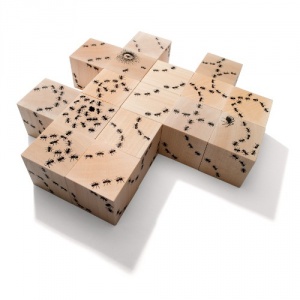
rss newssweaters
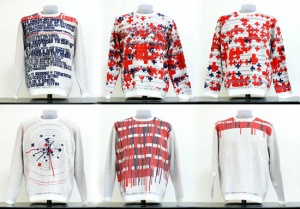
paper circle information cutout
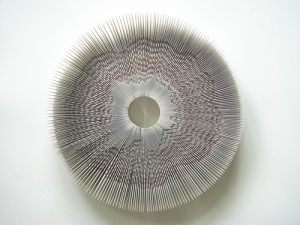
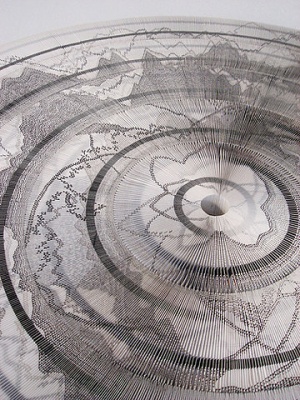
Arizona Dream M2 Jewelry rubber bands. Recycling, repurposing simple objects and seeing them in a different perspective.
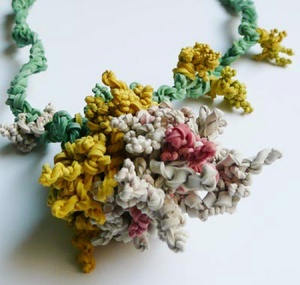
Carolyn Wigston - Construct. Lamps on/off with words. I imagine a project where I could create my own sentences, stories, and seeing what other people left.
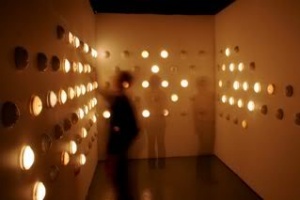
Chromatic painting typewriter. Combining to different mediums that don't seem to belong together, still they fit and have a surprising and new outcome.
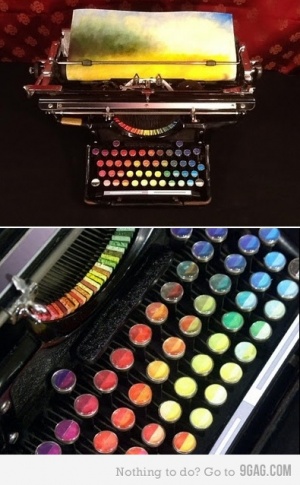
How to make a gif.gif. Combining two unrelated images and leaving you with a dreamlike 'what just happened' feeling.
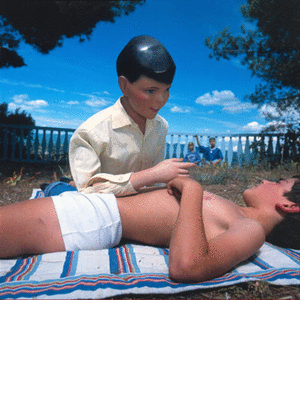
300px
300px
300px
21nd of February 2012 - pairs of pictures
Pairing the pictures: describe both pictures AT THE SAME TIME.
What do they have in common, how are they related?
Think ESP game.
Disassociation game: sword -> chair. associative word could be game of thrones, this is a personal association.
I want to find the glue that hold the concepts together. Words are easy to imagine and come up with, later on I could translate these words into images.
21nd of February 2012 - seminar with Steve - thesis outline
VIDEOS STEVE
doesn't matter anymore if photography has a claim on the truth, but how well it performs.
THESIS OUTLINE
synopsis - what are you talking about in the thesis - what is your project - relation to previous practice (what why how)
introduce your annotations (narrative of how you understand this book, what you're after) - how do these annotations relate to your project (thesis?)
bibliography?
- - - - - - - - - - - - - - - - - - - - - - - - - - - - - - - - - - - - - - - - - - - - - - - - - - -
While trying to figure out what I wanted to do with my dream descriptions, for my project I've been looking into comparison of images. Putting two non related images together to make a dreamlike collision. I'm not sure exactly where it's going. (Social) network-like dreamspace, or recently I've picked up the Italian Smorfia Napoletana, a dream interpretation system where aspects of dreams get assigned numbers, in order to play the lotto. I wanted something more tangible to work with.
I do however seem to have diverted from my initial project proposal. I've been reading up on dream analysis and I've been confronted with surrealism several times. My original proposal talks more about patterns between my own dreams, translations of my own mind to the outside world and the objects I create from my dreams. I'm not so much making a 'translation machine' anymore as I first envisioned it, as far as that was possible at the time.
I have trouble seeing the common threads and finding a good subject for my thesis that relates to the backbone of the original proposal and what the project eventually is going to evolve into.
--> narrow down bibliography, to help narrow down subjects.
13th of March 2012 - NEW IDEA project + thesis outline
I've tried putting two random images together and get a description out of that that would fit both of the images. This has proven to be quite difficult. In order to force associative thinking I've made a quartet game (see wikipedia: [1] or [2]), two different variants. In one game I've already assigned all the random images to form sets of 4 and colour coded them. While playing the game you can ask the opponent for images that complete one of your sets; but following the original rules, you can only ask for images related to the set you own. This means you have to describe your own set, or one of the images from your hand. In a normal game you could ask: "of the vehicles, do you have the car?", in this game you could ask: "do you have something aggressive?". You may inquire for this card on the basis of your aggressive yellow set, but get a green card in return. Also, a card with a creepy looking clown could be interpreted both as 'funny' and 'scary'. The discussion that takes place while playing was the most interesting part of the game. Also the combinations made really depend on how the game is played, the order the cards are taken from the stack, the way they are traded and how in the end, when you only have a couple of cards left you need to think about your descriptions differently in order not to keep exchanging the same cards. Also, sometimes you can't ask the same card back because you have not found the description yet that describes the whole set. i.e. When someone steals your 'car' card, you can ask it back in the next turn because you might still have your 'bike' card, both belonging to the 'vehicles' set. However, when someone steals your 'clown' card, how will you ask it back with only 'galaxy', 'truck', and 'grand canyon' cards in your hand? This again creates discussion and tries to open up the subconscious more, letting go of preconceptions and freely associating within self-set boundaries.
The other game does not have predetermined sets. The goal here is to make sets as you go. This game is much longer and much more difficult. It had some stricter rules of when you can change the topic of a set (after asking a card you set the topic, the topic can only be changed by the opponent when he asks for cards from another set, and receives matching cards from the previously set topic, which now is renamed to the new topic he just inquired about.
Both games are about asking the right question, how to ask it, how to rephrase it to say a similar thing but to mean other things as well and because of that glue multiple images together. But the game has too many flaws, it's playable only as a prototype to find out what I want to achieve by putting these images together. A next step is to make the game endless, to have random images be inserted in the game every time, so the player can reconfigure his hand to his liking and perception and though is challenged enough, but not until boredom or frustration.
At this point I had a hard time imagining an endless game, because the game still had other flaws. I thought about an online game or even an app. I made another mindmap to see what the subjects of my interest were and what the main focus was.
Written this means:

